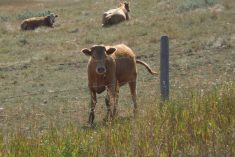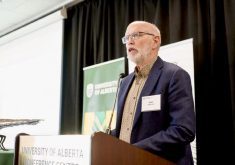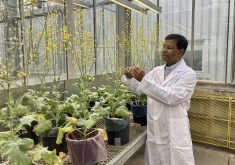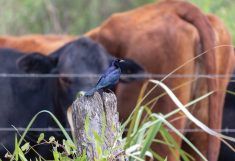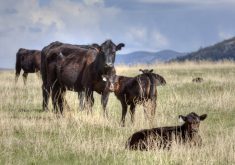A herd of Canada’s first breed of beef cattle will soon be home on the range at the Roy Berg Kinsella Research Ranch.
Dan Hays and his family are donating their herd of Hays Converter cattle to the University of Alberta for research purposes, with the herd moving to the Kinsella Research ranch by 2018. “This is a better decision than having a sale or distributing the herd in another way,” said Dan Hays. “This is a more permanent and lasting way of ensuring that research results will be important, and a good way to improve the genetics and make them more available and long lasting.”
Read Also

Farming Smarter receives financial boost from Alberta government for potato research
Farming Smarter near Lethbridge got a boost to its research equipment, thanks to the Alberta government’s increase in funding for research associations.
Hays will also be making a major financial donation to enable the research centre to care for the herd of 100 breeding females and a herd sire group.
The cattle, developed by Hays’ father Harry, were recently part of a research study that used genomic information to control inbreeding and increase feed efficiency, carcass traits, and meat quality. The genomics research being done at the Kinsella ranch is a way to improve the genetics of the Hays Converter cattle and the beef industry in general, said Hays.
“I think it’s got a lot of promise and it will be a good home for what has been my herd for a long time,” said the 76-year-old retired senator.
His herd, which hasn’t been marketed since 2000, was used in a research project by master of science student Allison Fleming, who analyzed growth rates, ultrasounds, and carcass traits. She also examined the management of genetic diversity in the herd — inbreeding is a concern because the herd is so small. Thanks to her research, animals with very specific traits have been selected in the last two breeding seasons.
Hays Converter cattle were developed in the 1950s by Harry Hays, who served as federal agriculture minister from 1963 to 1965. He was a dairy farmer who was involved in the swine and poultry industries and liked the way those industries used measurements of the carcass of the animal or the volume of milk produced to select for breeding. When Harry Hays bought a ranch near Calgary, he began crossbreeding animals.
“He wanted to have a beef herd that would reflect ideas about crossbreeding in a better way than they were being reflected in the purebred selection processes that were the practice of the day,” said his son.
Like his contemporary Roy Berg, the elder Hays also crossed cattle, an idea considered highly controversial in the 1950s. His herd combined genetics from Hereford, Holstein, and Brown Swiss cattle, selected for fast growth, ability to survive harsh Canadian winters, sound feet, easy calving, and good milk production and fertility.
In 1975, the Hays Converter became the first Canadian pure breed to be recognized by the Canadian Livestock Pedigree Act. The breed is used in commercial beef production by three breeders in Manitoba and Quebec. There are several Hays Converter herds in the country, but most are small. The researchers at the Kinsella research station will genotype the progeny within the herd and create a genomically enhanced breeding program, hopefully developing new markets for the cattle. There has been some interest from the Australian market, with breeders hoping to cross the Hays Converters with Brahman cattle to improve crossbred production.





